“Simplicity,” St. Vincent once said, “is the virtue I love most” [CCD I:265] and our Rule lists it first among our five Essential Virtues. [Rule, Part I, 2.5.1] So what does the virtue of simplicity call upon us to do?
Simplicity, Vincent taught, is a virtue primarily concerned with God. In simplicity, we present ourselves, and our words, with absolutely no intent to mislead or evade; we are always straightforward. We do this, he said, for the love of God and for His greater glory, because God is Himself “pure act and a very simple being” and is “pleased with simple souls.” [CCD XII:246]
In serving the neighbor, it is especially important to act and to speak with simplicity. The world our neighbors must navigate has no shortage of false claims and promises, empty flattery and performative insults. As we seek to build relationships based on trust and friendship, then, we have to be very careful not to appear “wily, clever, [or] crafty.” [ibid]
There is something of a childlike nature in the virtue of simplicity. Indeed, St. Louise explained that it was Christ’s “simplicity and charity which led Him to come to us as a child so as to be more accessible to His creatures.” [Spiritual Writings, 718] Similarly, describing the childlike simplicity of one of his missioners, Vincent marveled that his “simplicity made him lovable and loved by everyone, but especially by God, who no doubt usually communicated with him in a special way, since cum simplicibus est sermocinatio ejus.(His discussion is with the simple.)” [CCD II:377]
Like all virtues, simplicity must be both external and internal. We seek, in our words and in our deeds, in our hearts and in our souls, the “simplicity of being” that Louise described, that allows God’s grace to act in us without obstacles. [Spiritual Writings, 818]
So, just as acting with simplicity means we do not deceive, and we do not exaggerate, it also means we must not be motivated by anything but the pure charity of our acts; we must do good only to do good, and because God wills it – never to simply make ourselves look good, or to gain favor.
Both Vincent and Louise used the image of a dove to describe the honesty, purity, and sincerity of the virtue of simplicity – the same symbol we use to represent the Holy Spirit. So perhaps when we open our Conference Meetings, asking the Holy Spirit to live within our lives, we might consider it a prayer for this virtue, that our simplicity may be like that of the missioner whom Vincent praised, “dove-like and holy, a simplicity that perfected his other virtues.” [CCD II:377]
Contemplate
Do I ever hide behind “it’s complicated” to explain away my failure to speak or to act directly?











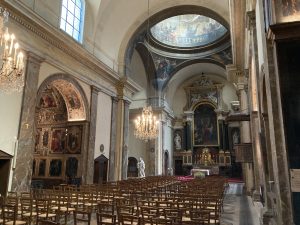













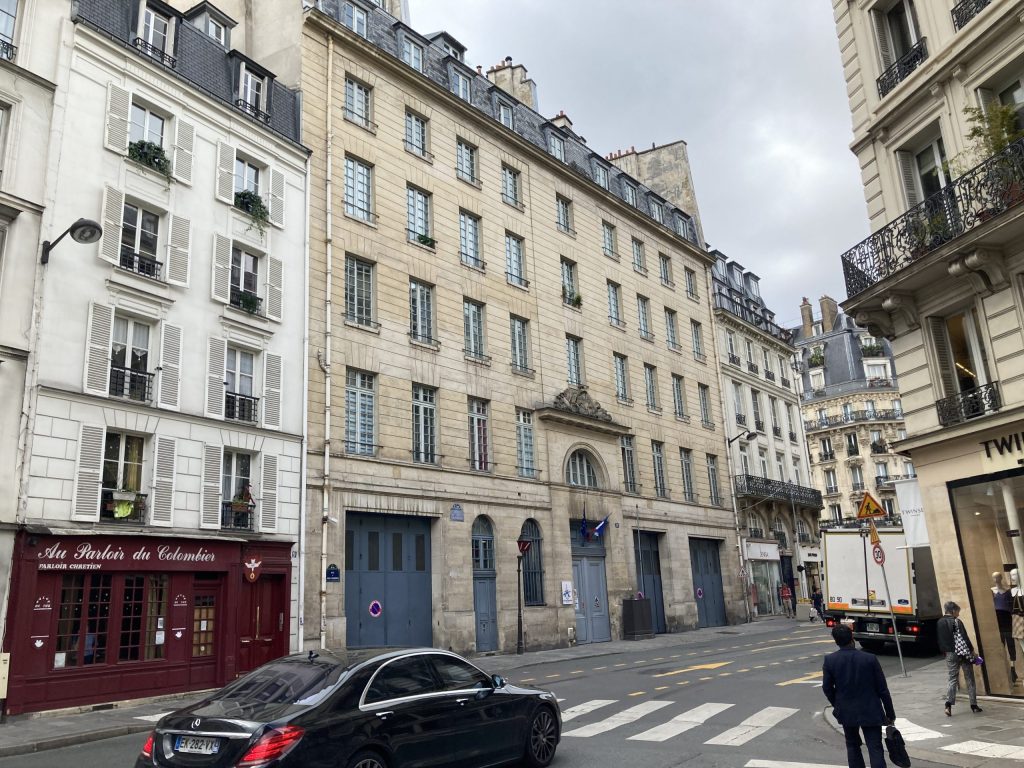


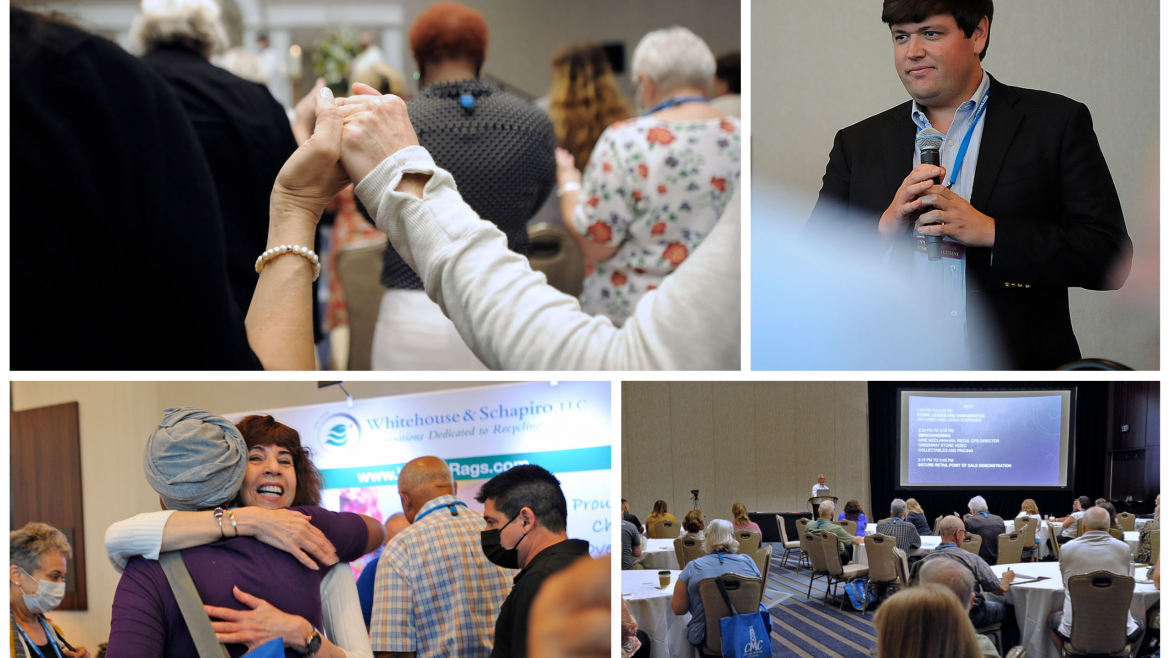













 Two weeks ago, Society of St. Vincent de Paul leadership from across the country gathered again for the first time in more than a year. Their primary purpose was Board and Strategic Planning meetings, though they had another reason to gather as well: to witness the dedication of the National Council’s new headquarters at 66 Progress Parkway in Maryland Heights, Missouri.
Two weeks ago, Society of St. Vincent de Paul leadership from across the country gathered again for the first time in more than a year. Their primary purpose was Board and Strategic Planning meetings, though they had another reason to gather as well: to witness the dedication of the National Council’s new headquarters at 66 Progress Parkway in Maryland Heights, Missouri.

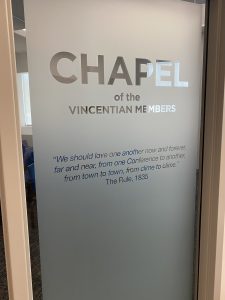 The Chapel of Vincentian Members
The Chapel of Vincentian Members The balance of past and present flows from the History Wall into the Chapel as well. While the altar is a new piece, the Stations of the Cross, crucifix, and seating came from the Archdiocese of St. Louis’
The balance of past and present flows from the History Wall into the Chapel as well. While the altar is a new piece, the Stations of the Cross, crucifix, and seating came from the Archdiocese of St. Louis’ 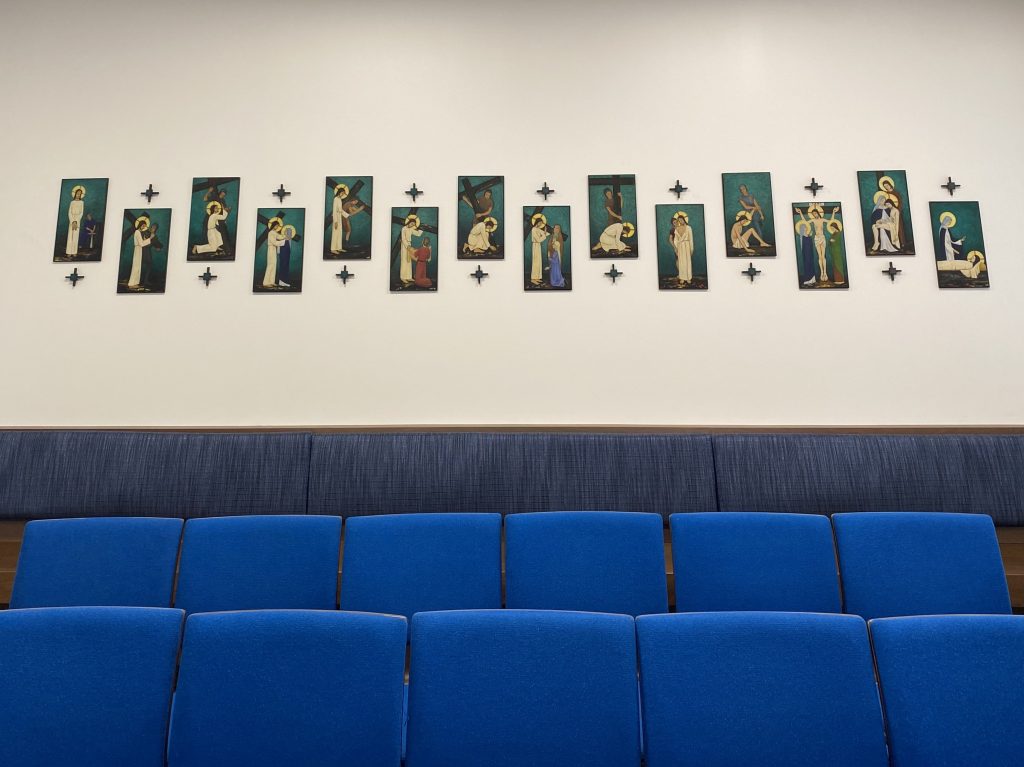 The space is filled with natural light coming from glass bricks off the building’s V-shaped entryway (which predates our occupancy), and the new altar has a V-shaped base whose shape mimics old glass wall. The overall feeling is one of serenity and harmony.
The space is filled with natural light coming from glass bricks off the building’s V-shaped entryway (which predates our occupancy), and the new altar has a V-shaped base whose shape mimics old glass wall. The overall feeling is one of serenity and harmony.